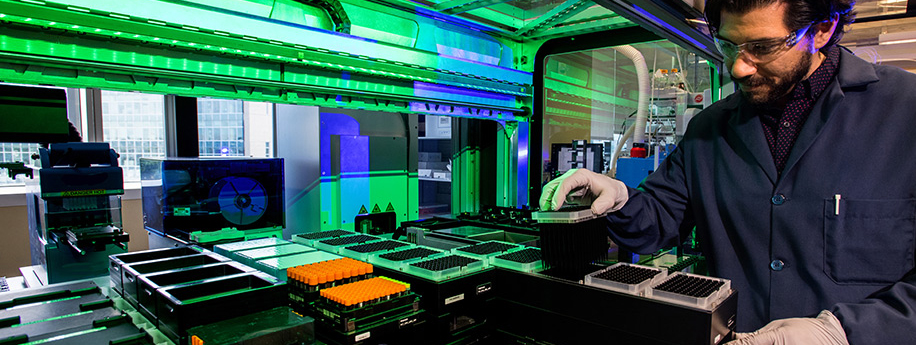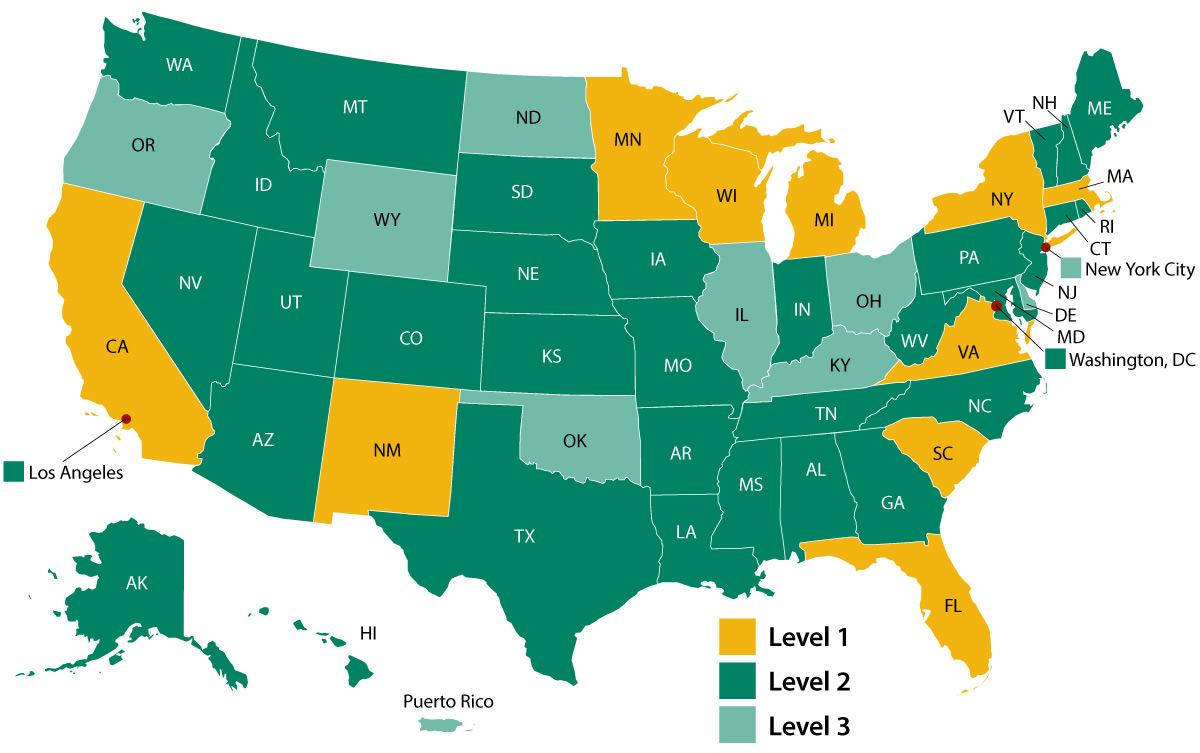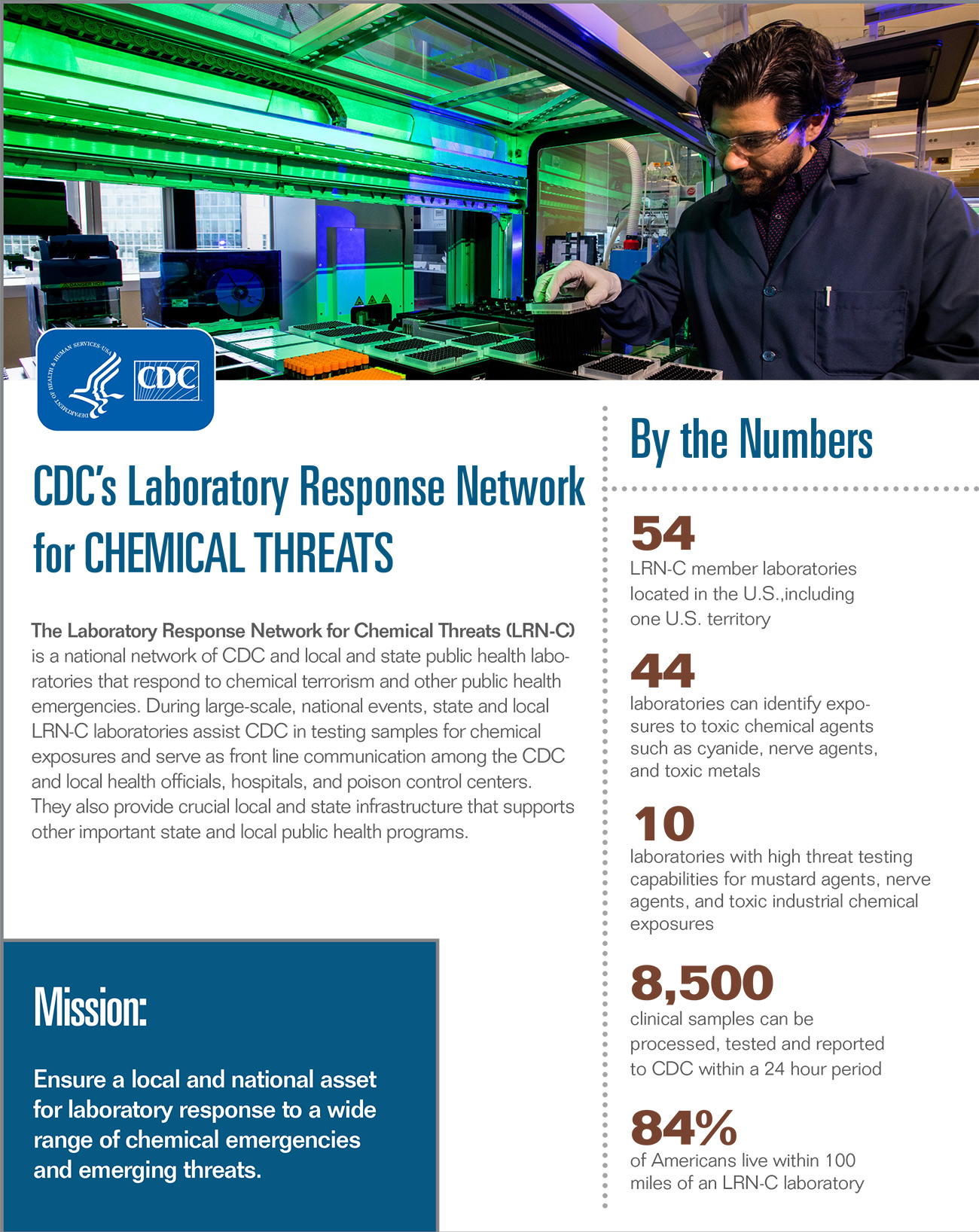CDC’s Laboratory Response Network for Chemical Threats

The Laboratory Response Network for Chemical Threats (LRN-C) is a national network of Centers for Disease Control and Prevention (CDC) and local and state public health laboratories that responds to chemical terrorism and other public health emergencies. During large-scale national events, state and local LRN-C laboratories assist CDC in testing samples for chemical exposures and serve as front-line conduit for communication among CDC and local health officials, hospitals, and poison control centers. They also provide crucial local and state infrastructure that supports other important state and local public health programs.
Ensure a local and national asset for laboratory response to a wide range of chemical emergencies and emerging threats.
- 54 LRN-C member laboratories located in the U.S., including one U.S. territory
- 44 laboratories can identify exposures to toxic chemical agents such as cyanide, nerve agents, and toxic metals
- 10 laboratories with high-threat testing capabilities for mustard agents, nerve agents, and toxic industrial chemical exposures
- 8,500 clinical samples can be processed, tested, and reported to CDC within a 24-hour period
- 84% of Americans live within 100 miles of an LRN-C laboratory
The CDC Surge Capacity Model
- Level 1 laboratories provide 24/7 assistance to CDC by testing samples in the event of a large-scale chemical emergency. These laboratories must maintain adequate staffing and equipment to support high volume testing with quick turnaround times. CDC also requires these laboratories maintain testing capabilities for exposures to the following high-threat chemical agents: mustard agents, nerve agents, and toxic industrial chemicals. In addition, Level 1 laboratories maintain all Level 2 testing capabilities.
- Level 2 Laboratories must maintain testing capabilities for exposures to chemical terrorism agents such as cyanide, toxic metals, and toxic industrial chemicals. Although Level 2 laboratories test a smaller list of chemical threat agents, LRN-C methods are customizable and can be readily adapted to detect broad classifications of new and emerging threat agents.
- Level 3 Laboratories ensure local support with sample logistics as well as training and outreach with local hospitals. All LRN-C laboratories maintain Level 3 capabilities.
Early detection and accurate identification of chemical threat agents are critical for effective treatment and minimizing additional exposures. CDC ensures the testing capabilities of LRN-C laboratories through the services it provides to the network. CDC program services to LRN-C include
- Hands-on laboratory methods training
- Response materials for sample testing
- Proficiency Testing
- Response readiness drills


- Founding partners: CDC, FBI, and the Association of Public Health Laboratories
- U.S. Department of Defense
- Organization for the Prohibition of Chemical Weapons (OPCW)
- U.S Food and Drug Administration
- U.S Department of Homeland Security
- U.S Department of State
- Private commercial laboratories
- Materials manufacturing vendors
- Integrated Consortium of Laboratory Networks (ICLN)
- HHS Office of the Assistant Secretary for Preparedness and Response (Biomedical Advanced Research and Development Authority)

Download the print friendly versionpdf icon
[PDF - 1.06 MB]